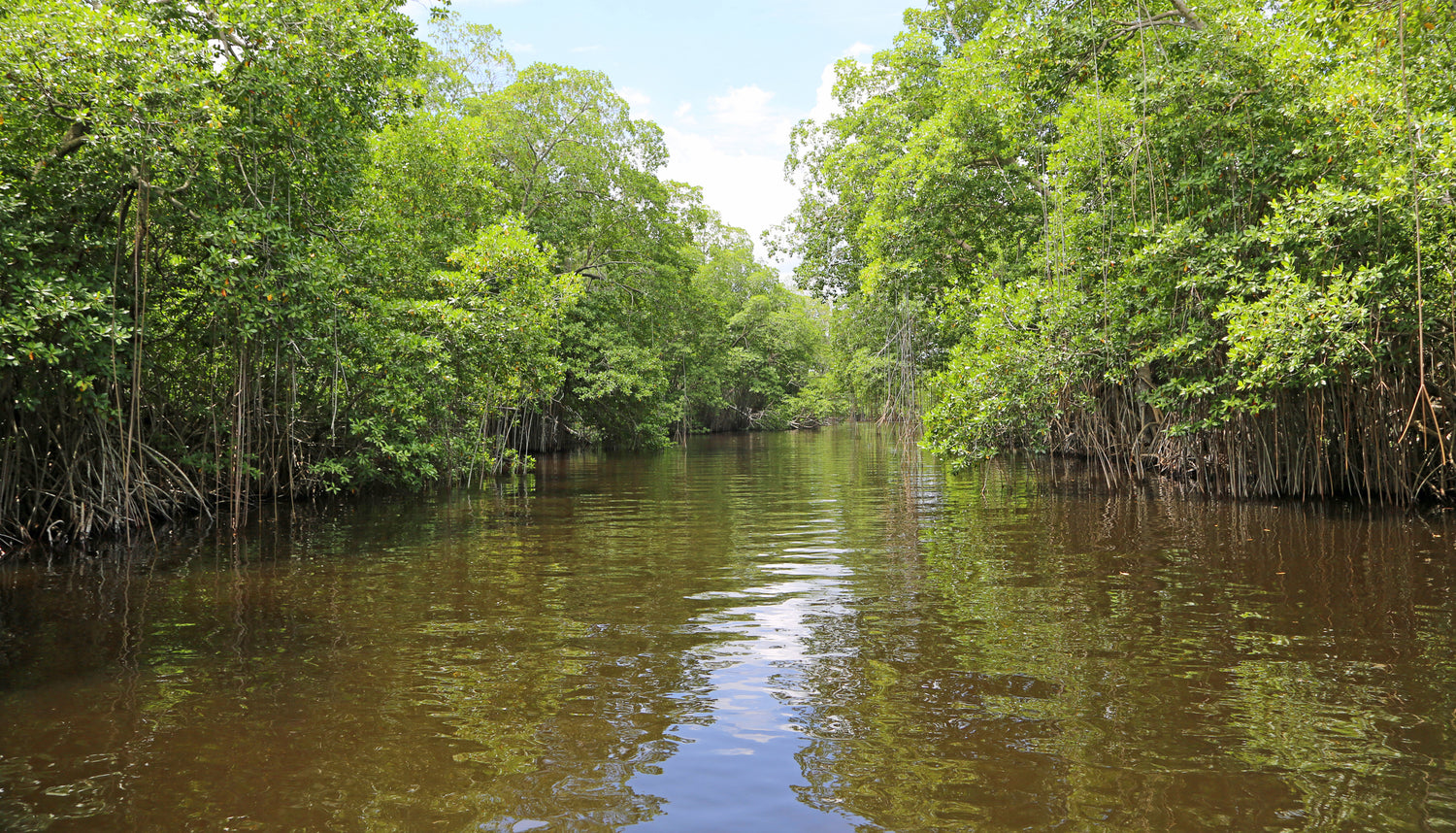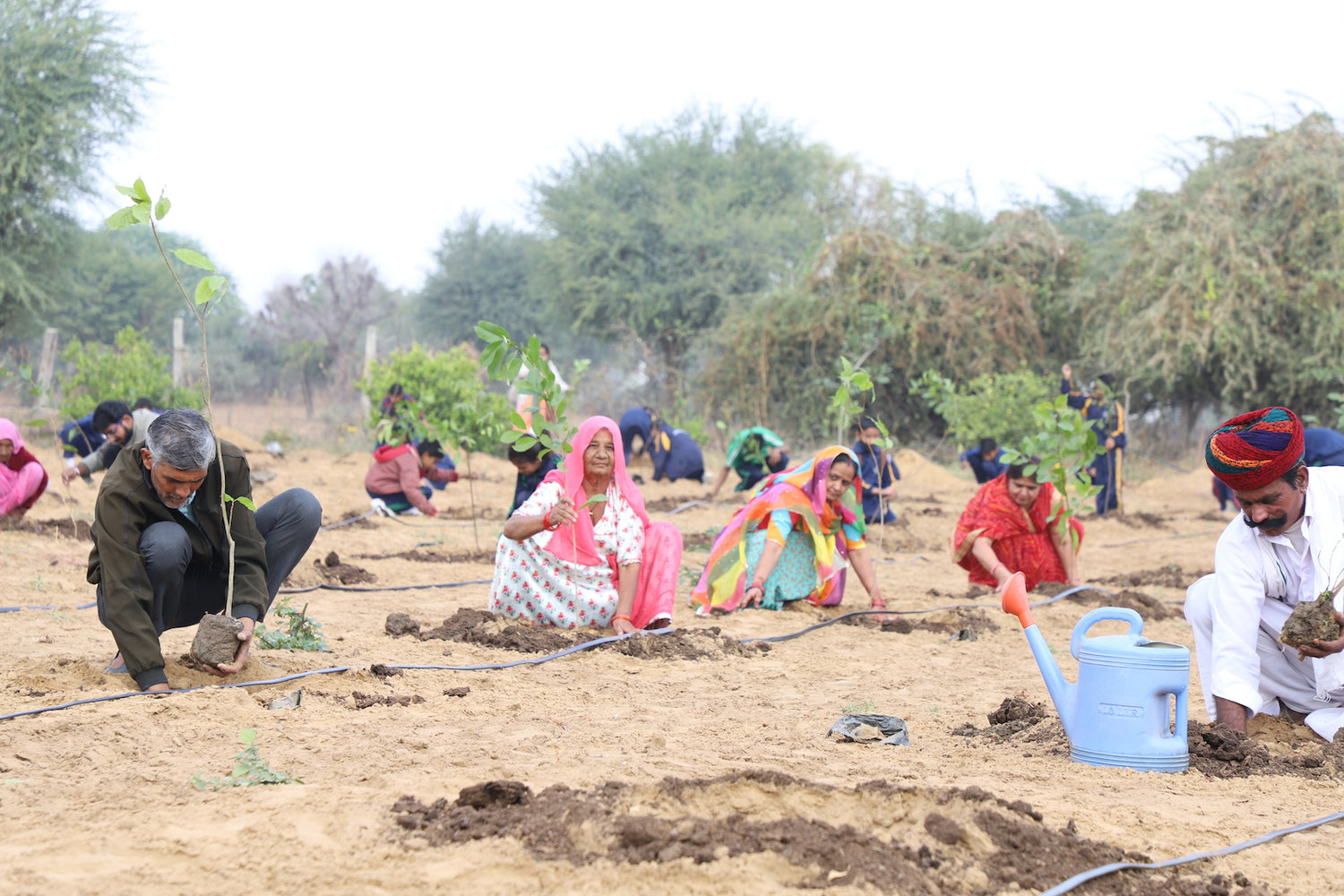Mangroves in Port Blair: Andaman’s Tropical Coastal Biodiversity
Port Blair, the capital of the Andaman and Nicobar Islands, is surrounded by some of the richest and most diverse mangrove ecosystems in India. These Read more
Connect with us
-
👥 Corporates
If you are looking for:
- 🌲 Tree Plantation Events
- 📊 CSR Projects
📧 corporate@growbilliontrees.com
📞 +91 9699723523
💬 +91 9325931304 WhatsApp (Only)
🕒 Mon - Sat | 10am - 7pm IST
-
🧩 Tree Plantation NGOs
If you are looking for:
- 💰 Financial Assistance
- 🤝 Operational Support
📧 support@growbilliontrees.com
📞 +91 9699723523
💬 +91 9325931304 WhatsApp (Only)
🕒 Mon - Sat | 10am - 7pm IST
-
🌼 Individuals
If you are looking for:
- 👥 Group Tree Plantation Drive
- 🌳 Bulk Tree Plantation
📞 +91 9699723523
💬 +91 9325931304 WhatsApp (Only)
🕒 Mon - Sat | 10am - 7pm IST
Trending
Trees for Corporates
Mangroves in Port Blair: Andaman’s Tropical Coastal Biodiversity
Port Blair, the capital of the Andaman and Nicobar Islands, is surrounded by some of the richest and most diverse mangrove ecosystems in India.
These mangroves, spread across the islands, are ecological treasures that protect the coast, sustain biodiversity, and provide livelihood opportunities for local communities.
As tropical guardians of Andaman’s coastline, mangroves play a crucial role in maintaining the environmental balance and combating climate change.
Historical and Cultural Significance
Mangroves in the Andaman and Nicobar Islands have supported indigenous tribes and coastal communities for centuries.
Historically, these ecosystems provided food, wood, and medicinal plants to sustain the local population.
Post-independence, as the islands developed into strategic ports, mangroves served as natural shields against tidal waves and storms.
Today, Port Blair’s mangroves are recognized for their ecological importance and are part of the World Network of Biosphere Reserves.
Ecological Importance
1. Cyclone and Tsunami Mitigation
Port Blair’s mangroves act as natural barriers, absorbing tidal surges and reducing the impact of cyclones and tsunamis. During the 2004 Indian Ocean Tsunami, these mangroves significantly minimized damage in areas where they were intact.
2. Biodiversity Hotspot
The mangroves are home to a wide array of species, including mudskippers, fiddler crabs, and saltwater crocodiles. They also attract migratory birds like herons and egrets, making them vital for avian biodiversity.
3. Carbon Sequestration
Mangroves in Port Blair are excellent carbon sinks, storing up to 10 times more carbon per hectare than terrestrial forests. This makes them critical in the global fight against climate change.
4. Water Filtration
Mangroves filter sediments and pollutants from the water, ensuring healthier ecosystems for marine life in the surrounding seas.
5. Fisheries and Livelihoods
Mangroves provide breeding grounds for fish, prawns, and crabs, sustaining the livelihoods of local fishing communities.
Fun Facts About Port Blair’s Mangroves
- Crocodile Central: The mangroves are a haven for the elusive saltwater crocodile, one of the largest reptile species in the world.
- Unique Root Structures: The mangroves in Andaman are famous for their stilt roots, which adapt to waterlogged soils and provide stability during tidal changes.
- Avicennia and Rhizophora Dominance: These two mangrove species dominate the ecosystem, thriving in saline waters and showcasing nature’s adaptability.
Environmental Challenges
-
Coastal Development Port Blair’s expanding infrastructure and tourism industry pose a significant threat to mangrove ecosystems, leading to habitat fragmentation and destruction.
-
Pollution Plastic waste, untreated sewage, and oil spills in the Andaman seas degrade mangrove health, affecting flora and fauna.
-
Climate Change Rising sea levels and increasing salinity due to climate change threaten mangrove survival and regeneration.
-
Overharvesting Unregulated harvesting of mangrove resources like wood and crabs has led to ecosystem imbalances.
Grow Billion Trees: Conserving Port Blair’s Mangroves
Grow Billion Trees is at the forefront of mangrove restoration and conservation efforts in Port Blair and across the Andaman and Nicobar Islands.
By combining scientific methods, community engagement, and sustainable practices, the organization ensures the long-term health of these ecosystems.
Collaborations
- Partnering with the Andaman Forest Department and local NGOs to execute large-scale mangrove restoration projects.
- Collaborating with research institutions to study mangrove biodiversity and resilience against climate change.
Execution Strategies
- Establishing nurseries for native mangrove species like Rhizophora mucronata and Bruguiera gymnorrhiza.
- Conducting plantation drives in degraded areas to restore mangrove cover.
- Using drones and satellite imagery to monitor ecosystem health and track reforestation progress.
Awareness and Advocacy
- Hosting educational workshops in schools and coastal villages around Port Blair to highlight the importance of mangroves.
- Promoting eco-tourism initiatives like guided mangrove boat tours and bird-watching expeditions.
- Running social media campaigns to educate the public about mangroves’ role in climate change mitigation and biodiversity conservation.
Key Achievements by Grow Billion Trees
- Post-Tsunami Restoration: After the 2004 tsunami, Grow Billion Trees restored over 300 hectares of mangroves, providing long-term protection against future disasters.
- Community-Led Nurseries: Local women’s groups have been empowered to cultivate mangrove saplings, creating both ecological and economic benefits.
- Eco-Tourism Development: The organization has developed eco-tourism projects that blend education with conservation, raising awareness while supporting local livelihoods.
Future Prospects
By 2030, Port Blair’s mangroves can serve as a global example of sustainable tropical ecosystem management.
Expanding mangrove coverage, enhancing biodiversity, and fostering eco-tourism will be essential to their long-term survival. Strengthened policies and increased community participation will play pivotal roles in achieving these goals.
Conclusion
The mangroves of Port Blair are not just vital ecosystems—they are lifelines for the Andaman and Nicobar Islands.
They protect against natural disasters, combat climate change, and sustain biodiversity, making them indispensable for environmental stability and economic well-being.
Grow Billion Trees is leading the charge to restore and conserve these ecosystems through innovative approaches and community-driven initiatives. With concerted efforts, Port Blair’s mangroves will continue to thrive as a testament to nature’s resilience and humanity’s commitment to sustainability.
Mangroves and Tsunami Protection in Port Blair
These mangroves are natural shields, reducing tsunami impacts and protecting the Andaman coast with their dense root systems.
Biodiversity in Port Blair’s Mangroves
Home to saltwater crocodiles, mudskippers, and migratory birds, these ecosystems are buzzing hubs of wildlife and a must-see for nature lovers.
Mangroves and Carbon Storage in Andaman
Port Blair’s mangroves trap carbon like pros, making them essential players in the fight against global warming.
Threats to Port Blair’s Mangroves
Urban expansion, pollution, and overharvesting are eating away at these ecosystems, underlining the urgency for conservation efforts.
Grow Billion Trees in Port Blair
This initiative restores mangroves, partners with communities, and leverages technology to ensure these coastal guardians thrive for generations.
Mangroves and Fisheries in Andaman
Acting as nurseries for fish, prawns, and crabs, these mangroves fuel the Andaman’s seafood economy while supporting biodiversity.
Mangroves and Eco-Tourism in Port Blair
With serene boat rides and crocodile spotting tours, these mangroves attract eco-tourists while promoting conservation.
Mangroves and Water Quality in Andaman
These ecosystems act as natural water filters, trapping sediments and pollutants to ensure cleaner coastal waters.
Mangroves and Climate Resilience
Adapted to rising sea levels and changing salinity, Port Blair’s mangroves are frontline warriors against climate impacts.
Community Role in Mangrove Conservation
Local communities in Port Blair are key players in protecting these ecosystems, working alongside Grow Billion Trees for sustainable conservation efforts.
Avian Life in Port Blair’s Mangroves
These mangroves attract herons, egrets, and other migratory birds, turning the Andaman coast into a bird-watcher’s paradise.
Unique Mangrove Species in Andaman
Species like Rhizophora and Bruguiera dominate these ecosystems, showcasing incredible adaptations to saltwater and tidal conditions.
You may like
Corporate Plantations
FAQ
What are the mangroves in Port Blair?
These mangroves are Andaman’s coastal guardians, protecting against tsunamis, hosting diverse wildlife, and storing carbon. Grow Billion Trees actively restores and preserves these critical ecosystems.
Why are Port Blair’s mangroves important?
They mitigate natural disasters, sustain fisheries, and combat climate change while supporting biodiversity. Grow Billion Trees ensures these ecosystems thrive through focused conservation efforts.
How do mangroves protect Port Blair from tsunamis?
Mangroves absorb tidal waves and reduce the impact of tsunamis, acting as natural barriers during extreme events. Grow Billion Trees enhances this protection through restoration projects.
What wildlife thrives in Port Blair’s mangroves?
From saltwater crocodiles to mudskippers and migratory birds, these mangroves are teeming with life. Grow Billion Trees works to protect and expand their habitats.
How do mangroves support fisheries in Port Blair?
Acting as nurseries for fish, prawns, and crabs, these mangroves fuel the seafood industry and support local livelihoods. Grow Billion Trees restores degraded areas to maintain this balance.
What threats do Port Blair’s mangroves face?
Urbanization, pollution, and overharvesting threaten these ecosystems. Grow Billion Trees addresses these challenges with sustainable conservation and community-driven projects.
What is Grow Billion Trees doing for Port Blair’s mangroves?
We plant mangroves, engage communities, and use advanced technology to monitor and restore these vital ecosystems for long-term sustainability.
How do mangroves combat climate change in Port Blair?
Mangroves efficiently store carbon and act as buffers against rising sea levels, making them climate warriors. Grow Billion Trees scales up restoration to amplify these benefits.
Why are saltwater crocodiles significant in Port Blair’s mangroves?
These crocodiles thrive in the mangroves, showcasing the ecosystem’s health and biodiversity. Grow Billion Trees ensures their habitats remain protected and thriving.
How do mangroves benefit eco-tourism in Port Blair?
Activities like boat tours and bird-watching attract eco-tourists while raising awareness. Grow Billion Trees supports sustainable tourism around these ecosystems.
What makes Port Blair’s mangroves crucial for water quality?
These mangroves filter pollutants and sediments, ensuring cleaner waters for marine life and local communities. Grow Billion Trees highlights their role in maintaining healthy ecosystems.
Can communities help conserve Port Blair’s mangroves?
Absolutely! Local communities are essential for protecting these ecosystems. Grow Billion Trees empowers them with resources and training for sustainable conservation practices.























